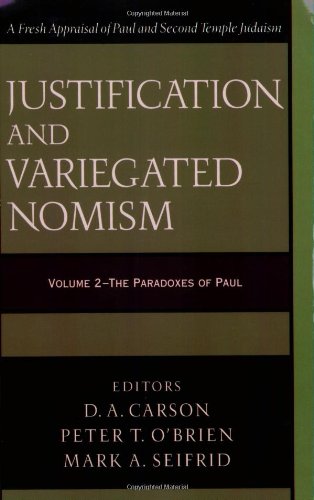A “Bonus” Chapter Summary from Books At a Glance
By Nathan Sundt
About the Author
Robert W. Yarbrough is Professor of New Testament at Covenant Theological Seminary, St. Louis; at the time of Justification and Variegated Nomism’s publication, he was Associate Professor of New Testament, Trinity Evangelical Divinity School.
Overview
In “Paul and Salvation History,“ Robert Yarbrough separates salvation history and Pauline studies into separate concepts: (1) most new perspective scholars “understandably regard their work as deeply reflective of “history,” particularly the history that is to some degree expressive of covenantal nomism. Within that history a “salvation” was embraced which, it is argued, Paul affirmed for himself and other Jews, though many have concluded that he articulated a contrasting Christocentric message with his mission to the Gentiles in mind.” Ultimately, Yarbrough contends, such scholarship has historicized the Pauline message of salvation—controlling and reimagining its parameters by resetting the historical possibilities out of which it arises.
By contrast, Yarbrough sets forth the salvation history which is (2) “the personal redemptive activity of God within human history to affect his eternal saving intentions.” Such salvation history (in this sense) refers not to a historicist rendering of Paul or his ideas but actually to the very activity of God. For further footing, Yarbrough points to the fulfillment of “Old Testament writings and institutions” in the “message of [Jesus’] death, resurrection, and eventual return.” Intra-biblical examples include Psalm 105, which surveys “salvation history” from Abraham to Joshua; examples include the genealogies of both testaments, which presume ongoing redemptive activity; examples include the historical Jesus’ self-awareness of his place in the redemptive economy from the time of creation; examples include the preaching of Stephen and Peter in the book of Acts preachments which “depict God at work to fulfill his promises to earlier generations, promises culminating in the saving death and resurrection of Jesus.”
[To continue reading this summary, please see below....]The remainder of this article is premium content. Become a member to continue reading.
Already have an account? Sign In
Buy the books

JUSTIFICATION AND VARIEGATED NOMISM (VOLUME 2): PARADOXES OF PAUL, edited by D. A. Carson, Peter T. O'Brien, and Mark A. Seifrid